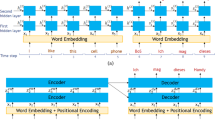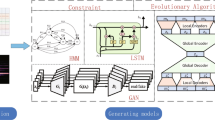Abstract
This is the second paper of a series which begins by treating the perception of pitch relations in musical contexts and the perception of timbre and speech. The first paper discusses in some detail those properties of musical scales required in order for them to function as “reference frames” which provide for the “measurement” of intervals such that ([1], p. 270),Every melodic phrase, every chord, which can be executed at any pitch, can be also executed at any other pitch in such a way that we immediately perceive the characteristic marks of their similarity. Here we continue this discussion by developing quantitative measures of the degree to which different scales possess the above properties. Then that property of musical scales which permits a listener to code the pitches of which it is constituted into “degrees” is examined and a corresponding quantitative measure developed. Musical scales are shown to be optimal choices with respect to both the former and latter measures, and a theory limiting those scales which are musically useful to a small fraction of possible sets of pitches is proposed. Existing scales which have been examined fall within the theory, which links the techniques of composition which may be used (i.e., those which produce perceptible relations between musical segments) to the above properties of the scale structures. This paper is not self-contained—reading of the previous paper in this series is required.
Similar content being viewed by others
References
H. L. F. Helmholtz,On the Sensations of Tone as a Physiological Basis for the Theory of Music, (translated by Alexander J. Ellis, 1885) Peter Smith, New York, 1948.
P. Boomsliter andW. Creel, The long pattern hypothesis in harmony and hearing,J. Music Theory, 19615, 2–31.
J. C. R. Licklider, Three Auditory Theoreies, In: S. Koch (Ed.)Psychology: a study of a science, 41–144, McGraw-Hill, New York, 1959.
J. Kunst,Music in Java, Martinus Nijhoff, The Hague, 1949.
Mantle Hood,The Nuclear Theme as a Determinant of Patet in Javanese Music. J. B. Wolters—Groningen, Djakarta, 1954.
Mantle Hood, Slendro and Pelog Redefined,Selected Reports, Institute of Ethnomusicology, U.C.L.A. 1966.
D. Rothenberg,A mathematical model for the perception of redundancy and stability in musical scales. Paper read at Acoustical Society of America, New York, May 1963. Also: Technical Reports to Air Force Office of Scientific Research 1963–1969 (Grants and Contracts AF-AFOSR 881-65, AF 49(638)-1738 and AF-AFOSR 68-1596).
G. M. Stratton, Vision without inversion of the retinal image,Psych. Rev. 4 (1897), 341–60 and 463–81.
R. H. Thouless, Phenonmenal regression to the real object,Brit. Jour. Psychol. 21 (1931), 339–59.
M. von Senden,Raum-und Gestaltauffassung beioperierten Blindgeborenen vor und nach der Operation. Barth, Leipzig, 1932.
Carrol C. Pratt, Comparison of tonal distance, also: Bisection of tonal intervals larger than an octave,Jour. of Experimental Psychol. 11 (1928), 77–87 and 17–36.
H. Munsterburg, Vergleichen der Tondistanzen,Beitrage zur Experimentelle Psychology,4 (1892), 147–177.
Poincaré,The Value of Science, Dover Publications, New York, 1954.
P. Hindemith,The Craft of Musical Composition, Associated Music Publishers, New York, 1941.
Olivier Messiaen,Technique de mon Langage Musical, Alphonse Leduc, Paris, 1944.
J. F. Schouten, R. J. Ritsma, andB. Lopez, Cardozo, Pitch of the Residue,Jour. of the Acoustical Society of America,34 (1962), 1418–1424.
J. E. Evetts, The Subjective Pitch of a Complex Inharmonic Residue, unpublished report, Pembroke College, England, 1958.
Author information
Authors and Affiliations
Additional information
This research was supported in part by grants and contracts AF-AFOSR 881-65, AF 49(638)-1738 and AF-AFOSR 68-1596.
Rights and permissions
About this article
Cite this article
Rothenberg, D. A model for pattern perception with musical applications part II: The information content of pitch structures. Math. Systems Theory 11, 353–372 (1977). https://doi.org/10.1007/BF01768486
Received:
Revised:
Accepted:
Issue Date:
DOI: https://doi.org/10.1007/BF01768486




